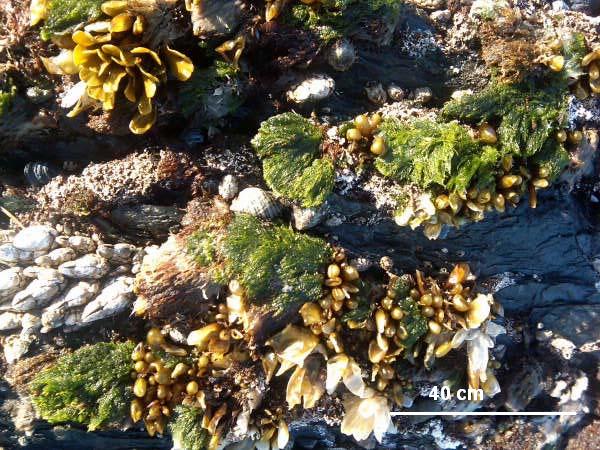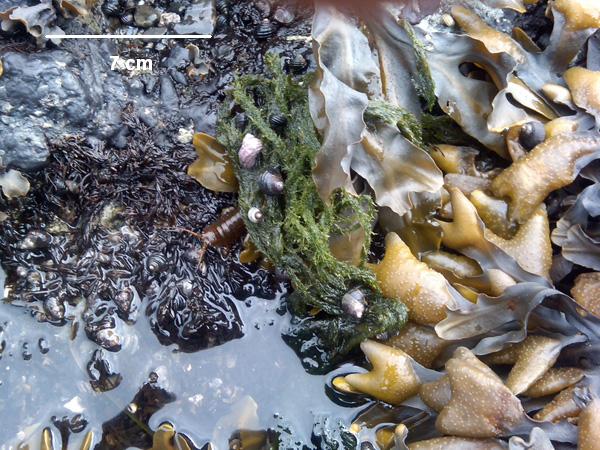
The pretty green rope
Ecology
Acrosiphonia growth at Botanical Beach, Vancouver Island B.C. Canada
Acrosiphonia with snails on it, along with an isopod underneath at Dead Man's Bay, San Juan Island, WA.
|
|
Website created by: Travis Seaborn ZooBot Spring Quarter 2009 Friday Harbor Laboratories University of Washington seabot@u.washington.edu All images created by the author, except where indicated, and cannot be used without permission from the author.
|
1) Van Alstyne, K. L., G. V. Wolfe, T. L. Freidenburg, A. Neill, and C. Hicken. 2001. Activated defense systems in marine macroalgae: evidence for an ecological role for DMSP cleavage. Marine Ecology-Progress Series 213:53-65.
2) Gordillo, F. J. L., J. Aguilera, and C. Jimenez. 2006. The response of nutrient assimilation and biochemical composition of Arctic seaweeds to a nutrient input in summer. Journal of Experimental Botany 57:2661-2671.

